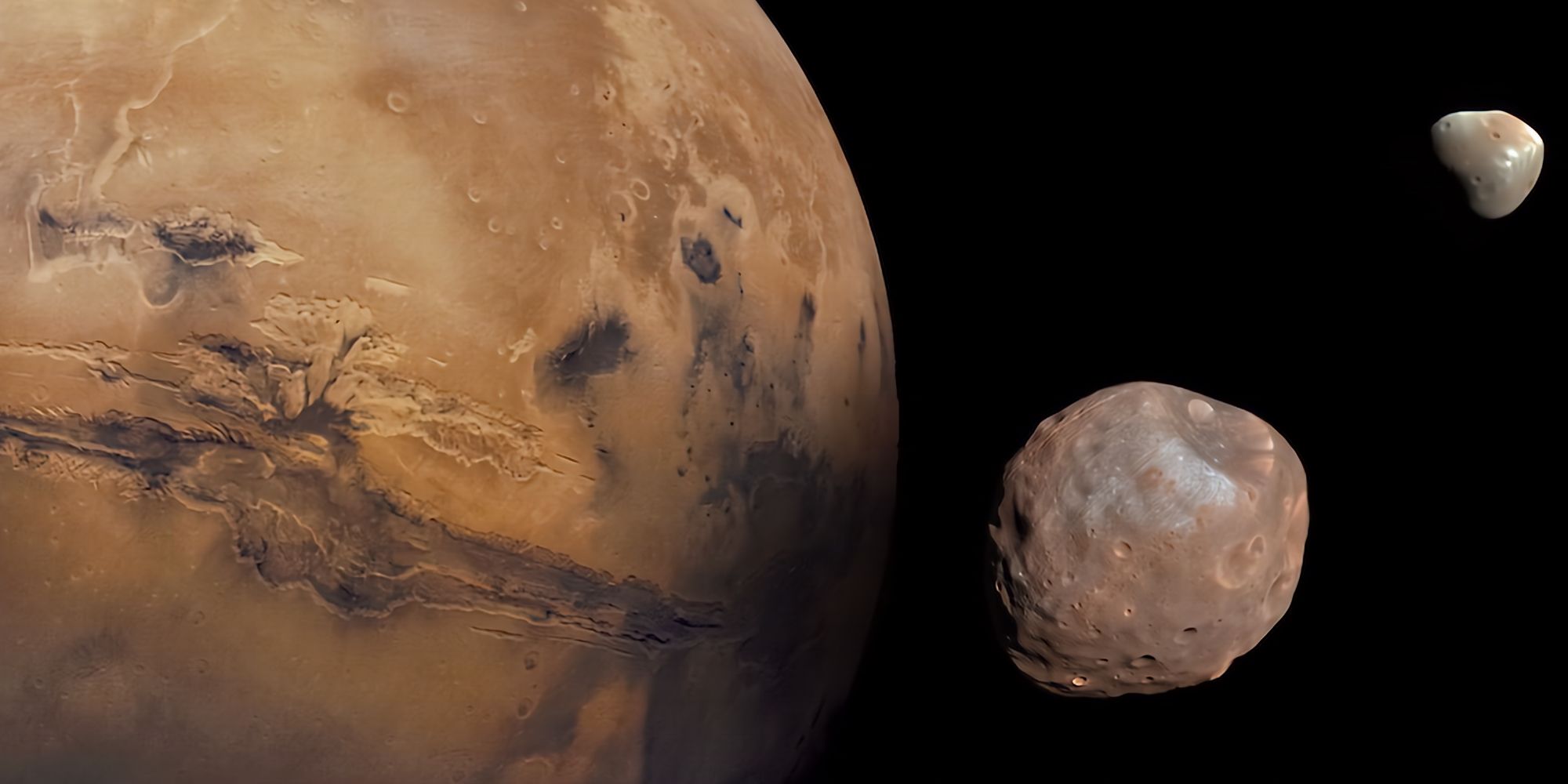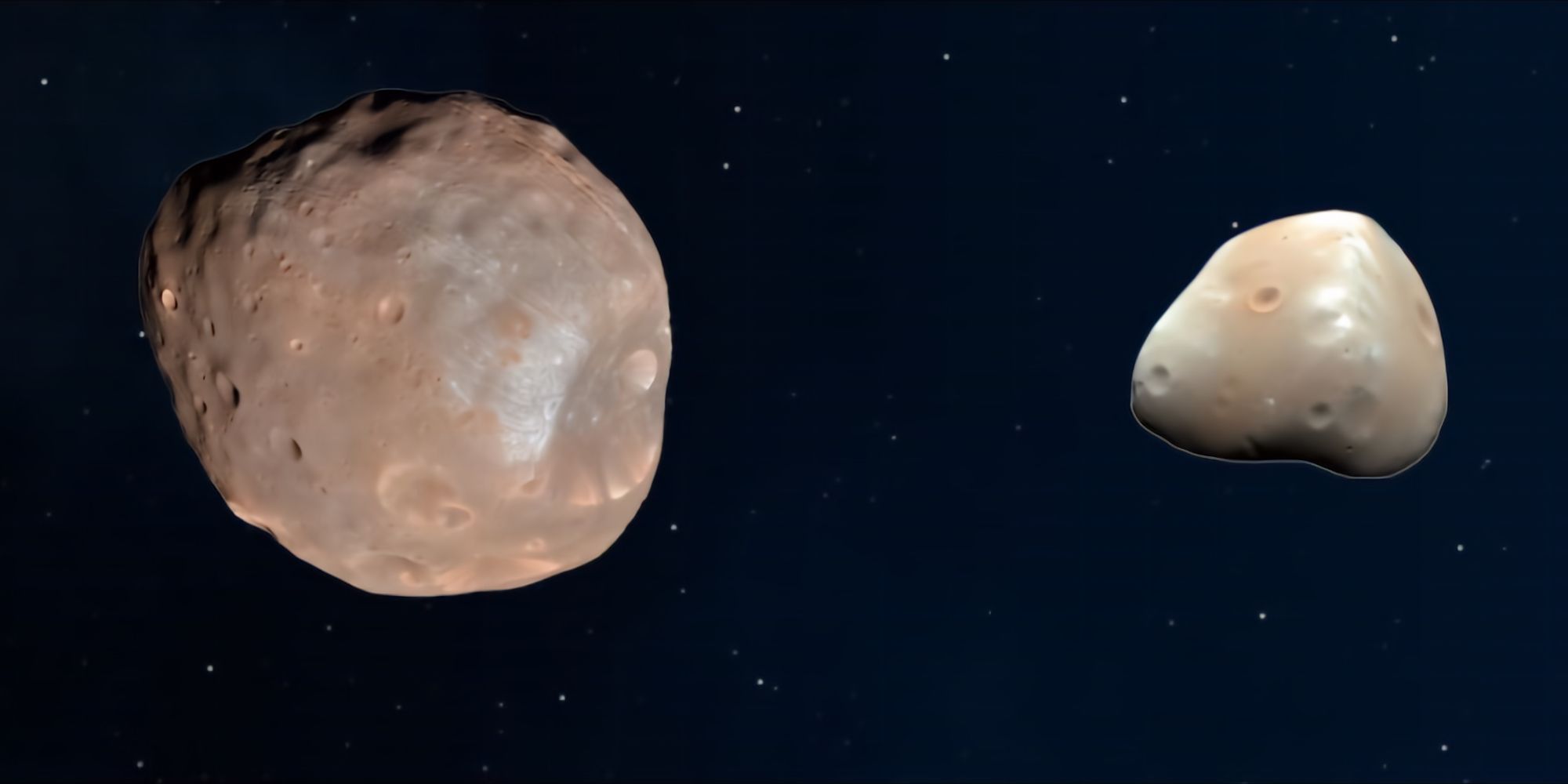Mars is well-known as being a dry and rocky planet in outer space, but did you know it's also joined by multiple moons caught in its orbit? Our Solar System is a genuinely fascinating place. The Sun sits at the center of it, there are eight vastly different planets orbiting the Sun, and it's the only known solar system with life. While it's just a small speck in the Milky Way and an even tinier component on the scale of the entire universe, there's no doubt that our Solar System is one-of-a-kind.
One planet contributing to the Solar System's uniqueness is Mars. Mars is the fourth planet from the Sun and often a focal point for numerous astronomers and scientists on Earth. It may be a dry and barren environment today, but evidence suggests it was once home to bountiful water (and potentially ancient life). This high interest means Mars is regularly in the spotlight within the space community. There are multiple robots currently exploring the planet, plans to send the first humans there within the next decade, and continued research to turn it into a habitable home one day.
Just like most planets in the Solar System, Mars isn't alone in its orbit — it also has moons! Mars is orbited by two moons: Phobos and Deimos. That's obviously more than the single moon orbiting Earth, but it's a smaller number compared to other neighboring planets. Jupiter touts an impressive 79 moons, while Saturn has even more at 82 moons. That makes Mars' two small moons look insignificant by comparison, but that doesn't make them any less interesting.
A Closer Look At Mars' Two Moons
Phobos and Deimos (named after horses that pulled the chariot for Ares, the Greek god of war) were discovered in 1877 by astronomer Asaph Hall. Both moons are quite small and feature many of the same materials found in asteroids. This strongly suggests that Phobos and Deimos were asteroids at one point in their life. Somewhere along the road, however, they were sucked into Mars' orbit and have been there ever since.
Regardless of how they got there, Mars' moons are two of the smallest ones in the entire Solar System. Deimos is the tiniest of the duo with a radius of just 3.85 miles. Phobos is a bit larger with a 7-mile radius, but neither is considered a large moon. The orbit of Mars' two moons is also quite fascinating. Phobos is about 5,826 miles away from Mars' surface and orbits the planet three times every day. In fact, NASA says, "No known moon orbits closer to its planet." What's especially interesting about Phobos is that it's gradually getting closer to Mars (about 6 feet every century). At that rate, Phobos is estimated to either crash into Mars or break up into a ring around the planet in roughly 50 million years. Deimos is much further away, by comparison, and doesn't have a similar fate. It sits around 14,562 miles from Mars and takes 30 hours to complete a single orbit.
So, what's the purpose of Mars' moons? While they don't cause massive tidal waves or anything else like our Moon does on Earth, scientists have toyed with the idea of using Phobos as a base to observe Mars and launch robots/astronauts to the planet. It'll still be quite a few years before humans are regularly setting foot on the Red Planet, but its moons could be a big help in getting humanity to that point — no matter how small they are.


